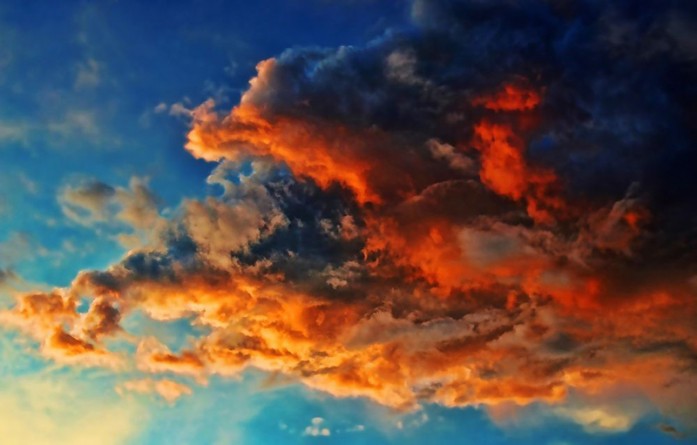
I am reminded of the Kiswahili proverb which states that “Dalili ya mvua ni mawingu” (the sign that it will rain is signified by the presence of clouds) which explains the role that clouds have in the history of our people. Most communities depended on rain for their agricultural activities and its prediction was crucial. The so called “rain makers” studied the movement of animals such as the migrating birds to predict rain occurrence.
They studied the relationship between rain and the shape of the moon and the direction of wind. Most importantly, the presence of certain types of clouds and their movement was the clear indication of rain occurrence.
The World Meteorological Organization (WMO) recognized the role that clouds played on weather and they made it a requirement for National Hydrological and Meteorological Departments (NHMD) to start observing and reporting on different aspects of clouds. It became apparent that there did not exist any classification criteria to accommodate the different types of clouds that were being reported. Therefore, such a criteria was proposed to classify clouds based on their altitude, physical appearance, role they played on weather, and formation. Figure 1 shows an example of this classification scheme as proposed by the National Center for Atmospheric Research (NCAR).

Figure 1: Cloud classification scheme
Over the years, scientists have studied clouds on the basis of their formation (e.g Figure 2), distribution, contribution to the earth’s energy budget, and their physical appearance in an umbrella subject known as “Cloud Physics”. They have made conclusions that clouds are a complex weather phenomena so much so that their contribution to the energy budget (by extension the contribution to the climate change) is uncertain as reported by the International Panel of Climate Change (IPCC) AR4 report. Currently, their representation in weather and atmospheric models is parameterized due to these uncertainties.

Figure 2: cloud formation on a land-sea interface.
Therefore, enthusiasts have been curious on these cloud complexities and the quest to capture them in a single photo has been an interest for some photographers. Such first shots were first observed from space by satellites and many more have been provided by the International Space Station (ISS). They have contributed so much in the study of tropical cyclones or hurricanes in the coast of United States. They have been complemented by magnificent photos taken in various parts of the ground. Is it possible for you to identify and name these clouds?

What time of day can you see this cloud?
If we assume the color of the cloud is white, why do you think you can see the color?
Which type of cloud is this?

Some clouds are interesting and beautiful to look at. Scientists write quite large publications to explain their formation.
Name these type of clouds

Clouds are named from their physical appearance, height and other properties.
Why do you think this type of cloud is called a cumulus cloud?

Clouds can interact with other atmospheric phenomena to produce a beautiful weather event such as the Northern lights or the rainbow.
What is the name of weather phenomena that is produced when the sun interacts with high clouds?
How does it occur?

A cloud can be formed by small super cooled water particles, ice or condensed water vapor. It is possible to find the three phases of water in a cloud.
Can you see clouds in this picture?
Can you name them?
How high do you think this cloud is?
What do you think this cloud is composed of?

What color is the cloud?
What weather event does it depict?
In your opinion, is the cloud moving? Which direction (east or west)?
What do you think is happening at the center of this cloud system?

How high do you estimate the clouds on the left part of the picture to be?
How do you think the clouds on the left are formed?
What type of weather system does this picture represent?

What type of cloud can you see?
The protruding tongue from the cloud is called?
What do you think will happen to the tongue?
What weather system does this cloud represent?
In your opinion, what kind of movement will produce this kind of cloud? (horizontal, circular, vertical, etc.)
Where on earth can you mostly find these kind of systems?

What can you see?
How high do you think the cloud is?
How is this type of cloud formed?

What type of clouds can you see?
How do you think these clouds are formed?

Can you relate the mountain with the picture with the clouds that you can see?

How many types of clouds can you see?
What property of atmosphere do these clouds represent?

What do you think is the color of these clouds? (remember this is a black and white pic)
What kind of weather do you expect to follow with this cloud system?
How high do you think this cloud is?
What kind of cloud do you expect on top of it?
Article by James Nyaga Wanjohi














